Aquaculture talk abounds at North America’s largest seafood event
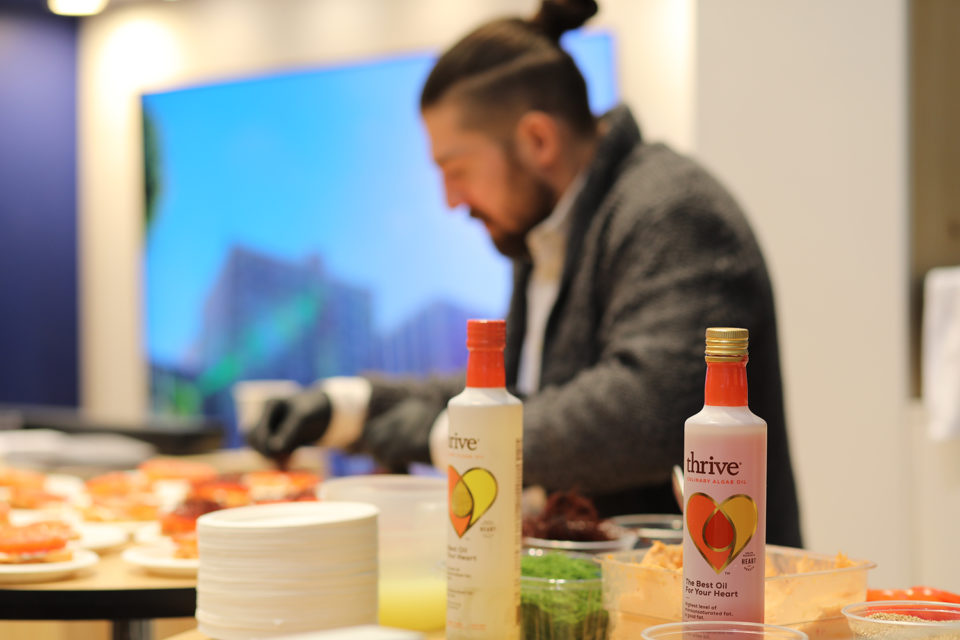
Aquafeed formulation makes coho salmon a net fish producer
Sammy Monsour, a well-known chef in Los Angeles, said he had to travel 6,000 miles to Chile and see Ventisqueros’ coho salmon farms firsthand if he was going to prepare and serve their fish at his restaurant, Preux & Proper.
“I’ve been working with sustainable seafood for years, and have been partners with Seafood Watch. I’m constantly seeking to learn more and keep an open mind,” Monsour told the Advocate during the premier of a short film that documented his journey from LA to southern Chile to learn about sustainable aquaculture.
The film was produced by Corbion, as the coho salmon on the Ventisqueros farm are fed a progressive aquafeed blend that uses AlgaPrime DHA, an algae-source of long-chain omega-3 fatty acids. Produced by BioMar, the feed has a fish-in-fish-out ratio of 0.5 to 1, meaning that half a kilogram of fishmeal and fish oil is used to produce 1 kilo of farmed salmon.
“Just as Sammy wanted to learn more, we believe his journey provides a better understanding of the role of feed ingredients, such as AlgaPrime DHA, in raising healthy salmon that in turn are better for our health and the health of the planet,” said Marc den Hartog, executive VP of innovation platforms at Corbion.
According to Vidar Gundersen, global sustainability director at BioMar, the feed formulation works especially well for the coho, as the fish grow faster and have a lower feed-conversion ratio, or FCR, than Atlantic salmon. As far as lowering the FIFO rate even further, Gundersen said “I don’t really see a need for it,” adding that the Silverside-branded fish is a rare example of a true “net fish producer.”
“There are lots of new technologies that are really important to support,” said Monsour. “Not everybody cares. There are a lot of chefs who aren’t locked in on transparency, and where their fish comes from, how it was caught or farmed. It’s a big conversation.”
Silverside salmon is available through Ventisqueros’ U.S. sales office BluGlacier, Booth 117.
Aquaculture (and frozen fish) key to increasing U.S. seafood consumption
Hovering between 14.5 and 16 pounds per capita annually, U.S. seafood consumption is considered extremely low for a country with one of the world’s leading economies.
So is a 25 percent increase in consumption in the near future pure madness? Or is it a realistic possibility? To Phil Walsh, seafood industry veteran and current director of sales at Australis Aquaculture (and Advocate contributor), two things need to occur for that to happen: Americans need to overcome their objections to both farmed fish and frozen fish.
At his panel discussion on Sunday at Seafood Expo North America, “Increasing America’s Per Capita Seafood Consumption 25% by 2023,” Walsh said aquaculture has come a long way since he’s been in the business. “Fifty-five percent of what we eat is now farmed, compared to 2 percent when I started,” he said.
In Japan, where per-capita seafood consumption has actually fallen from more than 90 pounds to the mid-70s, their concern is only about quality, not whether the fish was wild or farmed, fresh or frozen.
In fact, most markets don’t even use the term “fresh” seafood, preferring “chilled” to distinguish product that has not been in a freezer, pointed out fellow panelist Rich Castle, director of seafood for Midwest-United States retailer Giant Eagle. He said he relies on feedback from his store-level team leaders to see what consumers are talking about at the seafood counter.
“Customers ask is that wild or farmed. Farmed, a grimace on their face. They deal with that a lot,” said Castle. “That’s what they face all the time, preconceived ideas about aquaculture.”
Walsh pointed out numerous examples of how popular online information sites, like celebrity doctors and fad diet sites, can turn people away from farmed seafood. “Because we’re so fragmented, we’re easily attacked. Farmed salmon’s been taking it on the chin for a long time. There’s no science behind it. It’s built to arrest the customer.”
So how does a global and fragmented issue like aquaculture even begin to combat such negative perceptions?
“It’s about messaging, but also thinking about when the product goes into somebody’s mouth. That experience will be the biggest driver,” said Josh Goldman, CEO of Australis Aquaculture. “We know there’s a tremendous asymmetry to the way we remember bad news versus good news. There’s the three ‘F’ words: Frozen, foreign and farmed. Yet much of the [seafood industry’s] growth in the past fits those three Fs. People need to be aware of the emerging realities about the most efficient way to grow animal protein.”
Eric Buckner, senior director-seafood for Sysco Corp., said fighting between wild and farmed seafood and seafood with other proteins will get the industry nowhere. “We need to drive it collectively, not one over the other,” he said. “The reality is 23 pounds is not a stretch. It doesn’t even get us to the dietary guidelines, where we should be, eating fish twice a week. How do we get there? Aquaculture has to be a part of that.”
Steven Hedlund, communications director at the Global Aquaculture Alliance, said a “lack of unity” is what’s holding seafood back. Price volatility and transparency issues can keep it off of foodservice operators’ menus “because the consistency isn’t there. Shrimp is a perfect example.”
Hedlund said GAA is “embracing communities showing interest in aquaculture,” like investors and academics, hoping they can become industry ambassadors.
But what if all Americans started eating more seafood, at least the amount that the federal government recommends for optimal health (two servings per week)?
“You’d need four planet Earths in terms of global wild catch, if everyone consumed up to the recommendation,” said Goldman. “Aquaculture has an amazingly outsized role to play if we can shift grains for growing high-conversion animals into fish, which are up to six times more efficient. We could put more land into conservation. This is a big opportunity for sustainable food. We ought to be thinking about linking future concerns about sustainability with the promise of aquaculture.”
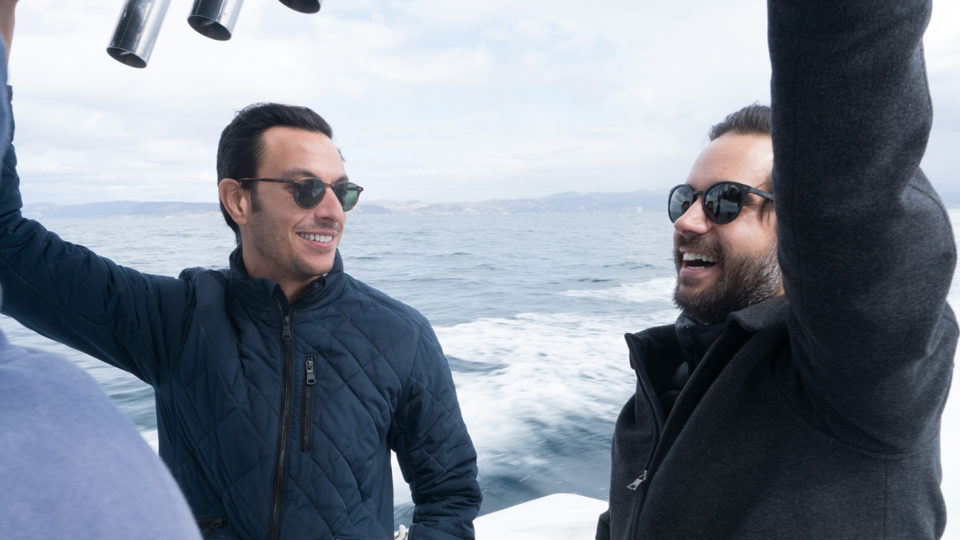
Pacifico Aquaculture: Investors and friends in farmed fish
Daniel Farag, co-CEO of Pacifico Aquaculture in Ensenada, Mexico, said that when he and his business partner and friend, Omar Alfi, set out to determine their next career stage, they quickly identified “food and population growth” as a key opportunity.
“And we really liked protein. In aquaculture, we found a holy grail of animal protein, the most efficient with resources. We came across an interesting opportunity, where the dynamics in the U.S. make it challenging to do aquaculture, specifically offshore,” Farag told the Advocate.
They soon learned about an outfit named Pacifico Aquaculture, a striped bass producer in Baja California that was founded in 2010 but had a key investor step away a couple of years later. Farag and Alfi stepped in and bought the fish farm in 2013. Although the company’s net pens are in close proximity to an island, the farm site is eight miles offshore, with deep, pristine ocean water and swift currents. And the island is an uninhabited bid sanctuary, protected by the Mexican government, with Pacifico acting as its “stewards.”
“The opportunity to grow this fish and to feed this population growth and service the U.S. market, an hour away by car, was tremendous,” he said. “Striped bass in particular, is key because we didn’t have to train the market about a new product.”
From the very beginning, Farag and Alfi, saw themselves selling a branded product, not just farming fish.
“We didn’t know what we wanted the brand to look like, but when we started we said, ‘what do the people we know care about?’ It’s doing it right,” he said. “So we had already found the right environment to grow the fish, mimicking their wild environment. And we had to make sure the fish tasted fantastic.”
Mexico has provided Pacifico Aquaculture a “path forward” to grow their business, an opportunity that might be elusive in the United States. “Streamlining the rules and regulations, and the permitting process, Mexico’s done that,” Farag said. “And that’s really it, that’s the only difference. Mexico is seizing this great opportunity.”
Pacifico’s striped bass is sold primarily (75 to 80 percent) to the U.S. market, Farag said, but the company is also keying in on domestic sales as well.
Investing in seafood means investing in aquaculture
Aquaculture has changed dramatically over the past several decades. And so has financing for the industry.
Roy Høiås, CEO and founder of Lighthouse Finance, said the aquaculture industry in Norway can bear witness to this dramatic change. There was a time, he explained on Monday during a conference session titled “Seafood Financing: Challenges and Opportunities for the Year Ahead,” when many Norwegian aquaculture companies were considered “not credit worthy.”
“Historically you can say the industry has been covering its capital need by themselves, that is the history. It’s changed from family-owned to listed companies,” he said. “But the biggest change, over the past three or four years, is huge numbers of financial players moving into the industry. Big players from Asia raising money, billions of dollars, to build up this industry.”
Yoav Dagan, VP-business development for Israel-based AquaMaof Aquaculture Technologies, agreed, saying that big money and large-scale production is the most likely path to success.
“Unfortunately, I will not be the guy who will bring good words. Small farmers are not able to raise funds in a decent percentage,” he said. And if you’re looking to break into the aquaculture game with a lesser known species, he added, you’ll need quite a bit of luck. “If you are planning to do a species out of the blue, you will not get the money and you will likely fail. Use reliable technology and well-known species.”
The problem that many investors see with aquaculture, all panelists seemed to agree, is the overall uncertainty on returns, the time required to raise funds and a clear exit strategy. Aquaculture financing requires a patient, long-term approach that often struggles to find a financing match. But Per Grieg, chair of Grieg Seafood ASA, one of Norway’s larger farmed salmon producers, was clear that investing in seafood reallymeans only one thing: aquaculture.
“You have to define seafood (financing) more closely. You’re talking about aquaculture. It’s a very long-term growth process. You have to have patience, and run for a long period with sufficient funds,” said Grieg, adding that when he entered the industry more than a quarter-century ago, Norway’s salmon industry was mainly small farmers, producing 200 to 500 metric tons (MT) per year.
“Four thousand metric tons? That’s less than half of what we do on one site,” said Grieg, driving home the point that economy of scale is crucial to turning a profit in aquaculture. “It is a more mature industry, a lot of listed companies with extremely professional reporting and operations. Hardly any space for a small guy, unless you’re already there.”
Another key? Location. New producers on the scene could take up in areas like Newfoundland, Canada, or Russia or China. “But all that requires big money and high risk,” said Grieg. “You have to understand where you are in that value chain.”
AquaMaof, which specializes in recirculating aquaculture systems (RAS) and brings its technology expertise to investors looking to build land-based fish farms around the globe, said the most important thing of all is ability to execute – and aim to be, at minimum, producing 5,000 MT of product annually.
“Anybody can build a building. If you cannot execute a project later on, the struggle is after the construction, this is where the risk is high. If you have a good product it will be sold. The issue is whether you will be able to do it. It’s the name of the game,” said Dagan. “Economy of scale is playing a big role. Not less than 5,000 MT, or you will not be able to compete with our friends with the cages.”
Barton Seaver’s Coastal Culinary Academy launches online courses for chefs
Chef and sustainable seafood advocate extraordinaire Barton Seaver announced that his Maine-based Coastal Culinary Academy (CCA) has launched a series of online courses designed to educate chefs about seafood, an effort designed to drive seafood consumption in the United States.
While the academy will bring students to Maine to increase “seafood literacy” among food professionals in an immersive learning experience, the online courses will be available to anyone, anywhere. Seaver said it was important to give chefs the option to learn during their free time, which, for many young chefs trying to make a name for themselves in the business, is extremely limited.
“Our goal is to get more people eating more seafood, across all demographics,” said Seaver on Monday morning at Seafood Expo North America. “It’s about influencing influencers, but also widening the pool of influencers at the same time.”
Seaver’s approach aims to increase the volume of conversations about seafood (“both loud and mass”), because he believes there isn’t enough media coverage and general interest in seafood.
“We have a belief in the world that if you don’t see what you want to see, just go make it,” said Seaver. The CCA also publishes “Seafood & The Menu” magazine, which just published its second issue this month.
The online courses feature short videos and tests, which students can take and retake as they wish. The idea is to “train infantry” to raise seafood knowledge among food professionals with buying power. The courses are on the Rouxbe (pronounced “ruby”) platform.
“We have generations of cooks that just don’t have a deeply seated seafood competence or confidence, so we created this online school in order to address that,” he said.
Veramaris’ Nebraska omega-3 oil plant to open July 2019
Karim Kurmaly, Ph.D., the CEO of Veramaris (a joint venture of DSM and Evonik), said that the company’s ambitious algal oil production plant in Blair, Nebraska, will open in July 2019 and will hit peak production within a year.
Veramaris made headlines when it claimed it could produce 15 percent of the omega-3 fatty acid needs – both EPA and DHA – for the global salmon industry.
“We are the only ones who have an oil that has both EPA and DHA, and at the concentration that we have, which is 50 percent. We’re ready,” he told the Advocate on Monday at Seafood Expo North America.
Veramaris’ algal oil, which can utilize multiple sugar sources to feed the algae in its industrial fermenters, can either displace canola or fish oil in aquafeeds, Kurmaly explained. Or it can be added on top. Most oils are incorporated into feed through vacuum coating, he said.
“It is designed to enable farmers to increase the EPA and DHA levels in their feed, if they want to make a health claim. It enables farmers to drop their fishmeal and fish oil requirements. Our oil helps them become a net fish producer. That, to be honest, is the biggest contribution we can offer to the aquaculture industry. For once they can become a net protein producer, which is a fantastic goal to achieve.”
Fish farming’s reliance on finite marine resources as a source of feed is its first “handicap,” Kurmaly said. Using more wild fish to create farmed fish is its second. “We’re hoping to enable farmers to resolve both of these problems.”
Cooke Aquaculture continues shrimp-farming acquisitions
New Brunswick, Canada-based Cooke Inc. continued its acquisitive ways during Seafood Expo North America when it announced on Tuesday that it had acquired All Seas Wholesale, a California-based seafood distributor. This came three days after the company announced that it had acquired Farallon Aquaculture de Nicaragua S.A., a vertically integrated shrimp producer in Leon, Nicaragua. The company employees 384 people and operates a hatchery, three farms and a processing plant.
“Farallon Nicaragua is a company guided by the highest international standards in environment, health, security, and quality – all attributes shared with our existing aquaculture and wild seafood fishery divisions,” Glenn Cooke, CEO, in a statement. “With their long-term expertise in the shrimp market, and emphasis on continuous innovation, Farallon is well positioned to support our expansion in the shrimp market to supply high quality, sustainable seafood.”
Last month, announced its acquisition of the Seajoy Seafood Corporation group, one of the largest vertically integrated shrimp farmers in Latin America, with farms in Honduras and Nicaragua.
Boston-based biotech company poised for aquaculture entry
Prospective Research, a Boston-based biotechnology company, announced that it has secured $1.7 million in a Series A funding, as it prepares to bring new animal health products to the market.
Seeking to replace antibiotics and other medicated feed in aquaculture, the company says it “employs specific bacteria paired with microbial signaling molecules to modulate bacterial behavior and provide preventative solutions against harmful bacteria” found in farmed fish and shellfish.
“We are excited to be building products that will solve real problems in the industry in a non-intrusive, cost effective and natural way,” said co-founders Dakota Hamil (CEO) and Jake Cotter (COO) in a statement. “Bacteria have been around for a lot longer than we have and we’ve spent the past few years learning to speak their language.”
The company, which in 2018 graduated from the Hatch aquaculture business accelerator program, recently pivoted from human drug discovery into aquaculture. Its focus for product development is the EMS (early mortality syndrome) shrimp disease and sea lice.
Dr. Carsten Krome, CEO of Hatch, said Prospective Research has a “good shot at revolutionizing the multi-billion dollar industry of disease management while making aquaculture more sustainable by reducing the need for antibiotics even further.”
Can James Beard Foundation’s ‘Smart Catch’ help influence the influencers about aquaculture?
Chefs are consumers too, living in the same media environment as everyone else. And sometimes the bad things they hear or read about farmed fish stick with them.
That’s why the James Beard Foundation is trying to help professional chefs navigate the murky waters of sustainable seafood information with training and support to make confident decisions about aquaculture. The Smart Catch program is the organization’s effort to educate an ever-changing roster of professional seafood buyers, said Katherine Miller, the organization’s vice president-impact.
An all-woman panel of seafood professionals discussed Smart Catch and how the conversation about aquaculture is changing during the conference session, “Changing the Narrative on Sustainable Aquaculture in the Culinary Community.”
Stacy Schultz, director of marketing and seafood sustainability coordinator for Fortune Fish & Gourmet, said many people approach aquaculture with a negative outlook: “A lot of people do not know why they’re ‘not supposed’ to be eating farm-raised fish.”
Fiona Lewis, chef and fishmonger at The District Fishwife in Washington, D.C., said most chefs simply don’t care. But she wants her kitchen colleagues to know that they don’t have to know every last detail about the oceans. They can lean on the JBF for clear talking points.
“Chefs have to be educated if they’re going to answer any of the hard questions,” said Lewis, “but they don’t have to have all the answers. They don’t have to be scared. Aquaculture is the fish of the future, and that’s just an absolute fact. We have to make sure that we get the message out to chefs so that they can talk about it.
Helene York, chief procurement officer for ISS/Guckenheimer, said the constant infighting in the seafood space, and the entire wild-versus-farmed argument has run its course.
“We sometimes set up a circular firing squad, putting down others while extoling the virtues of some. This is good, that’s bad. It’s not that simple,” said York.
Jill Kaufman Johnson, head of global market development-algae ingredients at Corbion, said working with chefs – as salmon industry partner Ventisqueros is doing with Sammy Monsour (see above) – is important because the aquaculture story has evolved. What the fish eat has become as important a conversation to have as what environment they are raised in.
“He took the journey to Chile, from the hatchery, to the farm and the feed manufacturer as well to see how it was all done. This was our attempt to bring that message to the public,” she said of the six-minute video that was produced.
U.S. government wants to grow domestic industry
The United States has historically taken a cautious approach to aquaculture development in federal waters, but it clearly wants to grow the industry. The barriers to this growth were the subject of the panel discussion, “The U.S. Government Approach for Expanding Aquaculture as a Key Investment in the Blue Economy.”
Aquaculture development is a “policy imperative” for NOAA Fisheries, said the agency’s deputy assistant administrator, Paul Doremus, because there’s a “global imbalance of supply and demand” for seafood that’s been evident for decades.
“We are working in, living in and helping evolve a highly innovative, very diverse global industry,” he said, so the time is now to bring more production under the agency’s oversight to “set a global standard for sustainability and responsible production.”
Output from U.S. fisheries has remained “stable” for the past 30 years, but as Doremus pointed out, “there aren’t enough fish in the ocean to meet rising demand” for seafood. Aquaculture, he added, has grown at a compound annual growth rate of 7.5 percent, and NOAA Fisheries expects that trend to continue.
Despite what he called a “vibrant” aquaculture industry, the United States ranks only 17thglobally in terms of output, Doremus said, giving the industry lots of room to grow.
“Population drivers are fundamental and long term. We’re well on our way to having 10-and-a-half billion people on the planet by mid-century and we’ve got to find a way to feed all those folks with the best, high-quality protein that we can, and that clearly comes from the ocean,” said Doremus. “It is a fundamental imperative that we need to figure out how to grow aquaculture in the United States, at a much greater volume than we have today. It’s not really whether, but where.”
Michael Rubino, director of the Office of Aquaculture at NOAA Fisheries, said aquaculture “newcomers are often not welcome” in coastal communities, so producers must first build social license with stakeholders they engage with.
“On the regulatory front, we inherited the English town system where everybody gets a say. We have a robust system of local, state and federal requirements and regulations for aquaculture,” he said. “So we have 30 years of what to do and not to do in aquaculture. But it’s a complicated process with a lot of steps to go through. So how can we, working with industry and stakeholders, get through that process more efficiently. Not to eliminate or reduce – industry wants regulations – but to do it more in a more effective way.”
Perhaps the pace of evolution in U.S. aquaculture law will pick up now that the National Science and Technology Council, which does a lot of cross-agency coordination, is taking a fresh look at aquaculture. Deerin Babb-Brott, principal assistant director for oceans and environment at the White House Office of Science and Technology Policy (OSTP), said the
“[The agency] just went through a refresh process, and as a result has identified and elevated aquaculture as an administration interest,” said Babb-Brott.
An aquaculture subcommittee, co-chaired by NOAA, the U.S. Department of Agriculture and OSTP, is now charged with “simplifying and amplifying” key issues about aquaculture, said Babb-Brott, to gain some momentum. Recommendations to streamlining regulations is one of the group’s top priorities.
Other panelists included Daniel Benetti, director of aquaculture at the University of Miami; Fern Gibbons, deputy policy director for the U.S. Senate Committee on Commerce, Science and Transportation; and Bill DiMento, VP-corporate sustainability and government affairs at High Liner Foods.
Verlasso GM: Seafood Expo is an ‘aquaculture show’
Chilean salmon was the talk of the show at Seafood Expo North America, particularly after the major producing companies announced their collective goal of halving antibiotic use by 2025.
Moises Del Rio, GM of Verlasso, said low antibiotic usage is a goal the company has incorporated into its policy since its inception seven years ago.
“It’s very important, and to eventually a ‘good alternative’ from Seafood Watch for the entire Chilean industry,” said Del Rio. “We’re already there, so I’d say we’re one step ahead. But we’re looking to continuously improve and lead the way in terms of sustainability practices.”
Del Rio said Verlasso fish are only administered antibiotics when they are sick, pointing to commitments it has made to Seafood Watch as well as the Best Aquaculture Practices (four-star) and Aquaculture Stewardship Council certifications the company has earned. He stressed that if antibiotics are used, Verlasso ensures that there are no traces remaining at harvest.
Also, a recent pivot in aquafeed formulations – most notably a shift from a GM yeast-based feed ingredient to a form of marine algae – has helped Verlasso reduce its dependency on marine fisheries. The company said that sourcing algae is key to capture nutrients like EPA and DHA fatty acids, and that using only trimmings from sustainable fisheries has reduced its fish-in, fish-out ratio to about 0.5:1.
“We at Verlasso believe that you have to do things the best way possible. We had a groundbreaking feed model, but we’ve replaced yeast with algae to allow us to maintain [a low] feed conversion rate,” said Del Rio. “The main driver is our continuous improvement philosophy. We’re always looking for new practices and technologies to improve our sustainability standards.”
Del Rio said that Verlasso is also diversifying its farming locations, and is expanding into Region XII of Magallanes, the most southern region of Chile.
Just three years into his job, del Rio said the biggest challenge thus far has been educating consumers about sustainable seafood and aquaculture.
“Some people still have a misconception about farmed seafood. Our challenge is to educate them and explain that things can be done the right way if you have the commitment, the vision to do it. At the end of the day it’s the future of food. We have to meet future demands for protein with aquaculture,” he said. The company is also excited to be bringing celebrity chef and TV star Andrew Zimmern to Chile next month.
“We’ll be capturing the entire process, from egg to harvest. He’ll see the whole operation with his own eyes, and then he can speak with a more authorized voice about all the great things we’re doing in Chile,” he said. “We’re going to show him the operation as is. We’re not going to put on a show.”
Del Rio said the energy at Seafood Expo North America was encouraging, as more people realize the potential of aquaculture. “Five years ago, this was a seafood show. Today it’s an aquaculture show,” he said.
Editor’s note: Check back for continuing coverage this week as Seafood Expo North America runs from March 17-19 at the Boston Convention and Exhibition Center.
Follow the Advocate on Twitter @GAA_Advocate
Now that you've reached the end of the article ...
… please consider supporting GSA’s mission to advance responsible seafood practices through education, advocacy and third-party assurances. The Advocate aims to document the evolution of responsible seafood practices and share the expansive knowledge of our vast network of contributors.
By becoming a Global Seafood Alliance member, you’re ensuring that all of the pre-competitive work we do through member benefits, resources and events can continue. Individual membership costs just $50 a year.
Not a GSA member? Join us.
Author
-
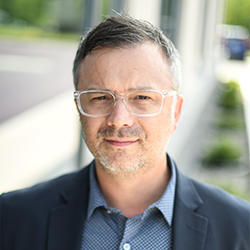
James Wright
Editorial Manager
Global Aquaculture Alliance
Portsmouth, NH, USA
Tagged With
Related Posts
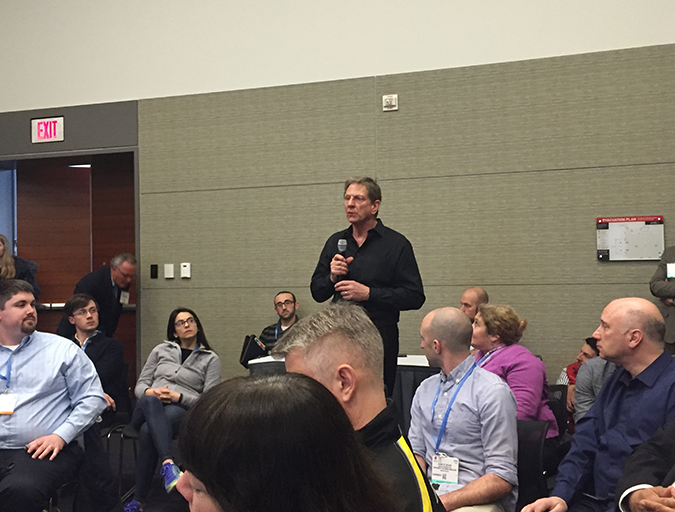
Intelligence
Boston brainstorm: Getting consumers to embrace aquaculture
In a discussion format somewhat unique to the bustling halls of Seafood Expo North America, aquaculture backers lamented the lackluster U.S. consumer acceptance for farmed fish.
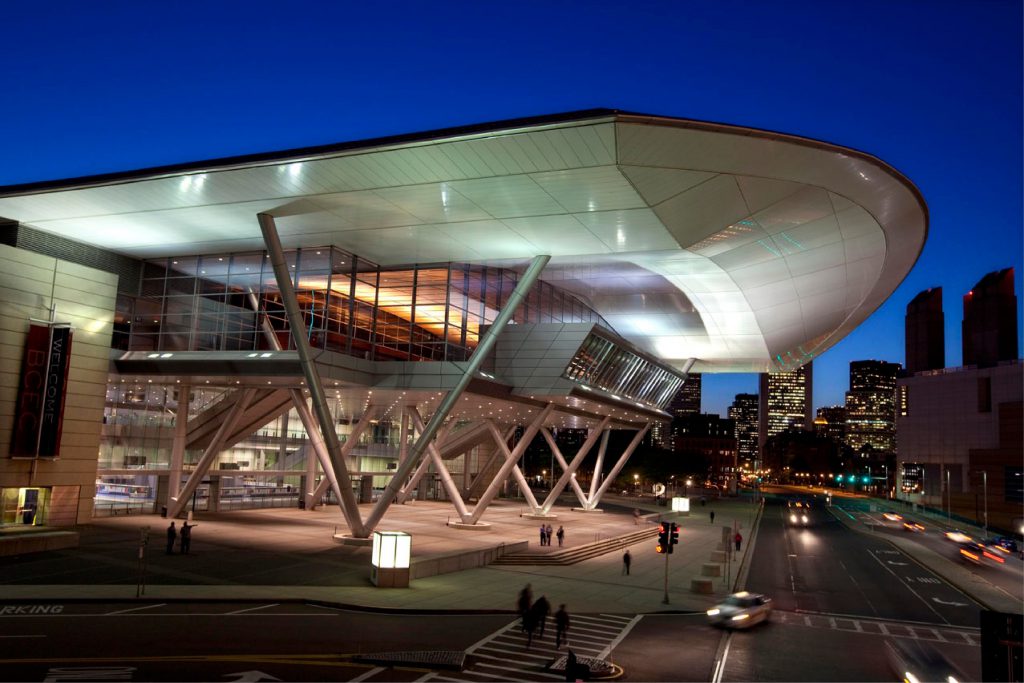
Intelligence
Bloggin’ up to Boston: Quick hits from Seafood Expo North America
News and notes from Seafood Expo North America in Boston, Mass., USA, 19-21 March, 2017. Posts by James Wright, Editorial Manager of the Global Aquaculture Alliance.
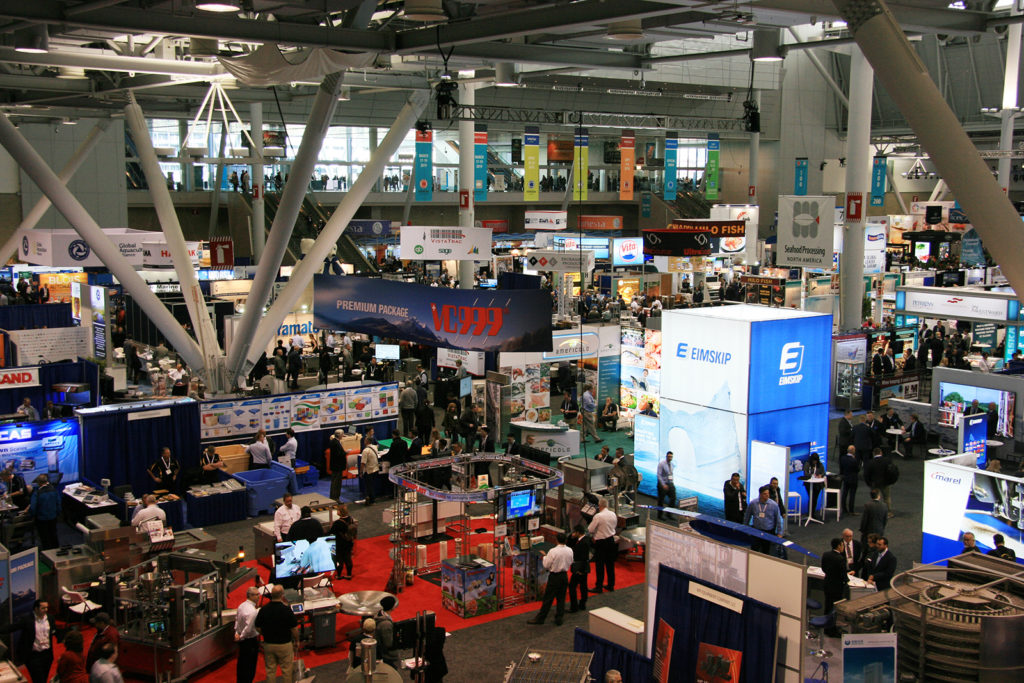
Intelligence
Canned mahimahi and more bits from Boston
Global Aquaculture Advocate Editor James Wright is covering Seafood Expo North America in Boston, Mass., USA. Check back periodically for updates.
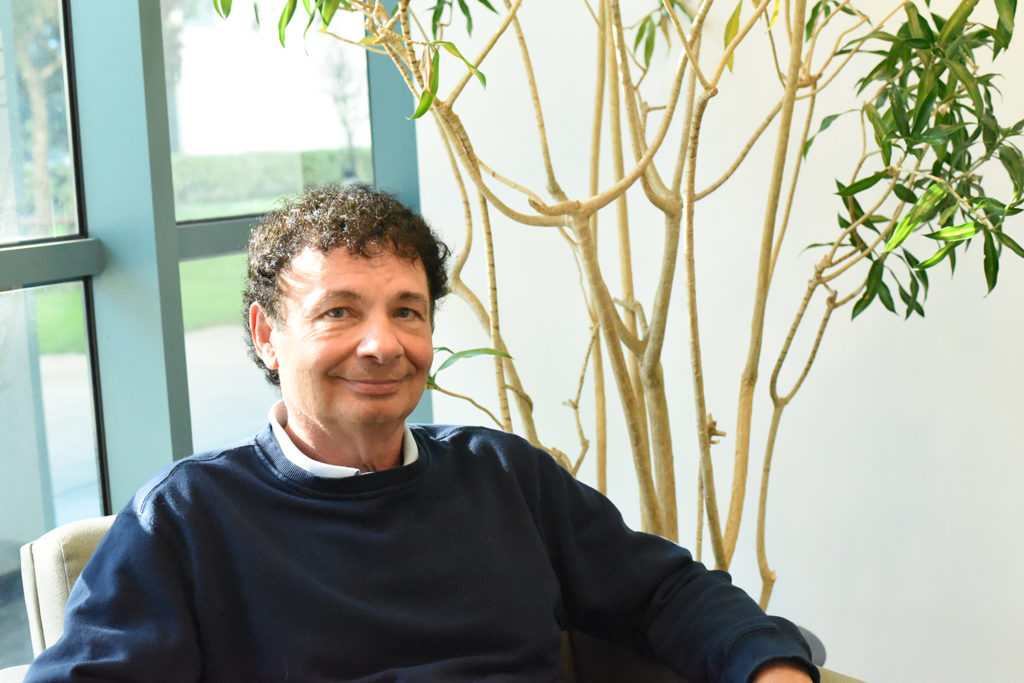
Innovation & Investment
Aquafeed ingredient AlgaPrime wins GAA Innovation Award
A proliferation of alternative feed ingredients has allowed aquaculture to extend the natural resources it depends on. AlgaPrime, packed with the long-chain omega-3 fatty acid DHA, is being recognized as a game-changing innovation for aquaculture feeds.

